If you are looking for the best tires for your car, you should answer two main questions first:
- Do your current tires highlight and enhance your vehicle’s specifications?
- Do your current tires fulfill all your needs?
If both answers are “YES”, then stick with your current tires and you will never make a mistake. If at least one of the answers is “NO”, it’s time to search for better tires. Your new choice will depend on:
- The vehicle you drive
- The climate in your area
- Your driving style and needs
- The surface you drive on.
Combining these factors, you will be able to choose the most suitable tires among thousands of models.
Choosing the Best Tires for Your Car
According to Your Vehicle
Different vehicles require different performance, tread, stiffness, etc., from tires. Using the right type will help you achieve the best fuel economy and improve safety.
Passenger Vehicles: Sedans, Crossover Utility Vehicles (CUVs), Minivans
These cars need adequate wet and dry surface traction, and often snow grip as well. Some luxurious sedans may also need a higher speed rating. These vehicles don’t require high load-carrying capacities, except for the minivans.
For a passenger vehicle you may need:
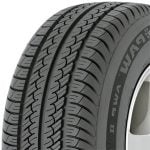 Touring tires.
Touring tires.
Touring or grand touring tires provide all-season traction and aim for the highest comfort of ride. They are more responsive, which makes it easier to handle turns and stop faster. Such tires often come with asymmetrical tread patterns, which help them be as quiet as possible. They will be the best tires for your car if you prefer quiet street use, or if you often go on tours with your family in a minivan.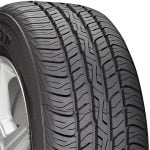 Performance tires.
Performance tires.
Performance tires provide superior handling and performance, at the expense of ride comfort. They are mainly for all-season or summer use, equipped with larger grooves for more grip on wet surfaces. These tires are rich in silica, which is aimed at great performance no matter the weather. Such tires usually have lower profiles, to improve their looks and function. Performance tires are best if you have a sports sedan, as they have higher speed ratings than touring tires.
On- and Off-Road Vehicles: Light Trucks, Sport Utility Vehicles (SUVs), Pickup Trucks
These vehicles need greater load-carrying capacities and tread patterns for on- and off-road use. The more you use the vehicle off the road, the more aggressive tread you need. Such cars will need used light-truck tires, with the letters LT as the beginning of their tire code on the sidewall. The following types of tires can be called ATV or UTV (all-terrain vehicle and utility terrain vehicle) tires.
On- and off-road vehicles may need:
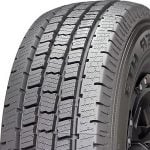 Highway light-truck (LT) tires.
Highway light-truck (LT) tires.
These will become the best tires for your car if you drive loaded and need adequate performance on highways all year. They work towards stabilizing a massive vehicle on paved roads. Such tires have a long lifespan, as they are enriched with harder rubber compounds that resist uneven wear. Their tread also has sipes to provide traction on ice and snow.
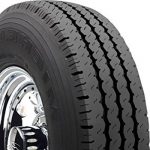 Ribbed tires.
Ribbed tires.
These tires are also for highway use, providing great handling and lasting a long time. They have solid well-formed ribs, which provide stability to the vehicles carrying heavy loads. Ribbed tires also channel water well, due to their tread pattern. These are the best tires for your car if you drive a commercial heavy-load car that does lots of highway mileage.
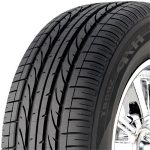 Sport truck tires.
Sport truck tires.
Sport truck tires are quite similar to highway and ribbed tires, but with higher speed ratings. They also have less sipes than highway tires. Still, their tread pattern design is for all-season use. Some of these tires have asymmetrical tread patterns, which create less noise.
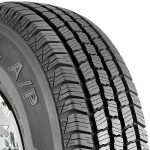 All-purpose or trail tires (AP).
All-purpose or trail tires (AP).
These are for more on-road, and less off-road, use. They are more aggressive than highway LT tires, but not as tough as all-terrain or mud-terrain tires. They have sipes and overlapping blocks, which provide adequate performance on most surfaces, in most weather conditions.
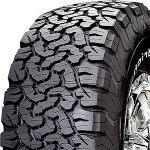 All-terrain tires (AT, A/T).
All-terrain tires (AT, A/T).
All-terrain tires usually provide all-season traction on all surfaces. These are best if you drive equally on- and off-road. They have aggressive tread patterns that continue to the edges of the sidewalls. In the center, the pattern changes to smaller tread blocks and thinner grooves, to provide traction on made roads. You can learn more about all-terrain tires from this article.
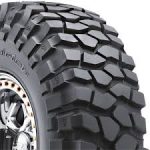 Mud-terrain tires (MT, M/T).
Mud-terrain tires (MT, M/T).
These tires are more for off-road use, as their tread is more aggressive, so to channel mud, dirt, debris, etc., through their grooves. MT tires will move you through sand dunes, muddy areas, wavy rocks, and a variety of other off-road surfaces. Their tread cleans itself, due to the special construction that pushes rocks and mud out of the channels. Their construction is extremely tough, with reinforced sidewalls, and the tires are also puncture-resistant.
Sports Vehicles: Sports Coupes, Sedans, Sports Modifications of On- and Off-Road Cars
Most types of vehicles have sports versions, or may be tuned to appear so. They will need tires aimed at performance, not at comfort, noise, or tread life.
If you own a sports vehicle, the best tires for your car may be:
- Performance tires.
Tires aimed at handling and sharp responsiveness have the following sub-types:- Extreme performance.
These tires are only for summer/three-season and dry road use. They provide extreme responsiveness, and high speed ratings. However, they have less hydroplaning resistance and ride comfort, but more noise. - Max performance.
These tires provide excellent traction on both wet and dry surfaces, but less performance than the previous type. They are also only for summer/three-season use. - Ultra-high performance (UHP).
These tires have the same characteristics as max performance tires, but they may also provide all-season use, at the expense of dry traction at high speeds. - High performance (HP).
These have all the same features as above, but often with better all-season use. These tires are closer to those more adequate for regular highway and street use. - Performance.
These tires provide all-season traction and adequate performance on made roads. -
-
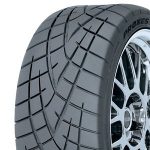
Extreme performance 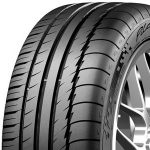
Max performance 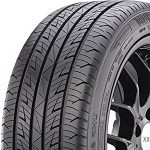
Ultra-high performance 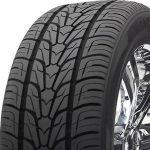
High performance 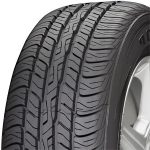
Performance
-
- Extreme performance.
-
- Track and competition tires.
As their name suggests, such tires aren’t usually used on streets. They provide permanent traction on dry roads, as they have almost no tread pattern, so to have as much contact patch area as possible. They have extremely high speed ratings and temperature resistance. However, they wear really fast, due to the soft rubber compounds used for their manufacturing.
These tires are DOT-approved (Department of Transportation), but are usually used on cars that take part in racing series’ or amateur racing competitions. They will be the best tires for your car if you are a racer.
- Track and competition tires.
According to Climate
Hot, mild, and cold climates require tires to have different rubber compounds and tread patterns. If you have cold winters and warm/hot summers, and you want good traction during both, you may need two sets of tires. In fact, some states even require them.
For different seasons and climates, you may need:
- All-season tires.
All-season tires provide adequate on-road grip all year. They ride smoothly and quietly, providing a high level of comfort. Such tires also last long and help balance the fuel consumption of your car. These are the best tires for your car if you live in an area with a mild climate. - Snow/winter tires.
These are the best tires for your car if you need greater snow traction. They provide stability and remain pliable in temperatures below 7C. Such tires have better winter performance than all-season tires, but don’t last as long—they can only be used for 3-4 seasons. When their treadwear reaches 4/32”, they are already bald and will no longer bite into snow sufficiently. 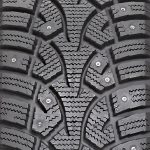 Snow/winter studded tires.
Snow/winter studded tires.
For areas with lots of ice and snow, there are studded tires equipped with metal studs around the tread. They are quite noisy, but provide superior traction on icy surfaces. You shouldn’t use them on pavement though, as they can damage the road and cause vibrations.- Summer/three-season tires.
Summer tires are for warm seasons, and provide superior grip on wet and dry surfaces. Their compounds also adapt only to warm temperatures, which makes them best for your car if you live in a hot climate. They last longer than all-season tires, due to harder rubber compounds. Three-season tires also have a greater contact patch area with circumferential grooves. This provides hydroplaning resistance.
NOTE: There are touring, performance, and ATV/UTV tires, with seasonal features, so combine them to choose the type of tire you need.
According to Driving Style and Needs
A particular type of tires may work well for a particular driving style:
- HP and UHP tires will be the best tires for your car if you are a rough driver. They provide good responsiveness and performance, sharp reaction, and little braking distance.
- Touring tires will be best if you like quieter drives on streets or highways. They give stability, good handling, and greater ride comfort.
- ATV tires are best if you own a heavier vehicle and like both highway speeds and off-road curvy drives. They provide superior stability, tough rubber, and universal tread patterns, which can carry you anywhere.
- AP tires are good if you drive on roads the most. All-terrain tires are suitable if you drive 50/50 on- and off-road. Mud-terrain tires will work well on any terrain if you use your vehicle mostly off-road.
- Any type + winter tires are best if you have to drive on snow and ice. They have lots of sipes and grooves to bite and channel snow, as well as soft rubber compounds for below-zero temperatures.
- Any type + summer tires are best if you like or have to drive more in summer, on clean wet or dry roads. They provide adequate speed ratings, good wet traction and hydroplaning resistance, and high temperature resistance.
According to the Road Surface
There are two huge divisions according to the surface you most often drive on: on-road and off-road. They may all be all-season, summer/three-season, winter/snow, and even some with performance features.
According to the descriptions above, the best tires for your car for on-road use are:
- Touring tires.
- Performance tires.
- Highway LT tires.
- Ribbed LT tires.
- Sports truck tires.
- Track and competition tires.
For balanced on- and off-road use, you may need:
- All-purpose or trail tires.
- All-terrain tires.
- Mud-terrain tires (some models).
For tough off-road use, you should consider:
- All-terrain tires (tougher models).
- Mud-terrain tires.
You can learn more about the versatility of off-road tires and the sub-types for specialized use (e.g. for sand) here.
5 Best Worldwide Tire Brands
The best tire company advice is to go with an established brand with proven quality. Here are five such companies that can provide you with the best tires for your car:
Michelin

Michelin is a France-based tire company that tops most ratings. They own many brands worldwide, including BFGoodrich, Uniroyal, Tigar, Kormoran, Kleber, and Riken. Michelin manufactures tires for all uses, including touring, performance, ATV, for all seasons and specific temperatures. Some of the best tires for your car from Michelin may be:
- All-season Defender.
- All-season performance Premier A/S.
- Winter/snow X-ice.
- All-season truck LTX.
Pirelli

Pirelli is an Italy-based tire company, now a subsidiary of Chinese ChemChina. They manufacture different types of tires but no other rubber products. You can see Pirelli tires on cars and motorcycles, especially racing ones, as the company has been a sponsor for sport competitions since 1907. The most popular lineups by the company are:
- All-season P4.
- Summer UHP Pirelli P Zero.
- Performance all-season Cinturato P7.
- Truck all-season Scorpion Verde.
Goodyear

Goodyear is an all-American tire company, meaning it wasn’t bought with a foreign company and wasn’t merged with one. They own brands like Dunlop and Kelly Springfield, among other less popular brands. Goodyear manufactures tires for all uses and vehicles, including on- and off-road cars, motorcycles, planes, etc. Their most popular lineups, which may be the best tires for your car, are:
- Truck all-season Assuarance.
- All-terrain Wrangler.
- UHP summer Eagle.
- Touring Assurance ComforTred.
Bridgestone

Bridgestone is the largest tire company in the world. It’s Japan-based and owns a large American tire brand, Firestone. Bridgestone tires and Firestone tires are high-quality tires that are used not only in Japan. They manufacture all kinds of tires and kept their best-in-the-world place for 8 years straight, as of 2016. Their most popular lineups appearing in the ratings are:
- All-season Ecopia
- Touring Turanza.
- Winter/snow Blizzal.
- SUV Dueler.
Continental

Continental is a German-based company manufacturing tires, braking systems, and other auto parts. The company is the 4th largest tire brand worldwide. Continental tires are famous for superior wet and dry grip, but their tread life is slightly shorter than that of other tires in the niche. Their most popular lineups as of today, which are potentially the best tires for your car, are:
- All-season True Contact.
- Performance all-season Pure Contact.
- Winter/snow Winter Contact SI.
- Truck all-season Cross Contact.
You can learn more about the brands that manufacture tires in the US from this article. Also, if you need to learn about officially assessed tires, visit this NHTSA website.
Tips on Choosing the Best Tires for Your Car
Mix Tires Wisely
When choosing the best tires for your car, you may consider mixing tires a good way to improve performance. This is mostly suitable for sports vehicles, but there are some rules:
- Don’t mix radial and bias-ply tires. (If you must drive like that for some time, make sure the tires of the same type are on the same axle.)
- If you buy tires of different sizes, make sure the larger ones are on the rear axle.
- The larger tires have to be no more than ½-1” bigger on the outer circumference than the smaller ones.
- Don’t mix off-road and touring tread patterns.
Choose the Right Specs
Choose the right size, speed rating, and load index when searching for the best tires for your car. The right size will help you get the best performance and function from your vehicle. The proper speed rating will help avoid tire overheating and provide as much speed as your car can give, or as much as you need. The right load index will ensure your safety and provide stability, if you don’t overload the vehicle.
All the information about the tire you are about to buy is on its sidewall, as part of three main codes. They are the size code, the DOT code, and the Uniform Tire Quality Grading rating. You can learn more about which information a tire may give you from this article.
Read Your Owner’s Manual for Answers
Every vehicle comes with an owner’s manual, where you can find recommendations on tires, load, speed, etc. Pay attention to the tips in the manual to avoid mistakes in choosing tires, inflating them, and loading the vehicle. In the manual you will find the tire sizes the wheels can wear, the average and maximum inflation rate, and load capacity.
Some information is also available on the car itself – look at the door jamb or the rear edge of the door. Before choosing the best tires for your car, make sure you know what the manufacturer recommends.
Think About Fuel Economy
Changing tires to achieve certain results may impact your fuel economy, making it better or worse. Bill VandeWater at Bridgestone Firestone North America warns tire choice can impact fuel consumption by up to 15-20%. Think about whether this is a high priority for you, and of your other priorities while choosing new tires.
Also, for the future, remember fuel economy doesn’t depend solely on the type of tires you choose. If you find the best tires for your car but neglect checking their air pressure, the result may be lost. Therefore, if you notice one tire is losing air more than the others, keep in mind it will impact your fuel consumption.
Keep Tire Age in Mind
One of the most important parts of the tire code is its age. It’s the number of years that have passed since the tire manufacture. You can see the information within the DOT code of the tire. The last four digits are the week and the year of manufacture.
Tires last for 6-10 years, depending on their type, the maintenance you provide them, and your vehicle. Make sure you don’t buy “new” tires that are already 5+ years old. Rubber has deteriorated rapidly at that stage, even if the tires weren’t mounted before. You can also learn more on tire date codes here.
Do Your Research
Do some research on the potential best tires for your car. The best way to do so is to read reviews by people who have already used them. Then you will see how the tires behave on different vehicles, in different climates, with different maintenance, etc. Thus, you may already predict whether these particular tires will be good for your vehicle.
